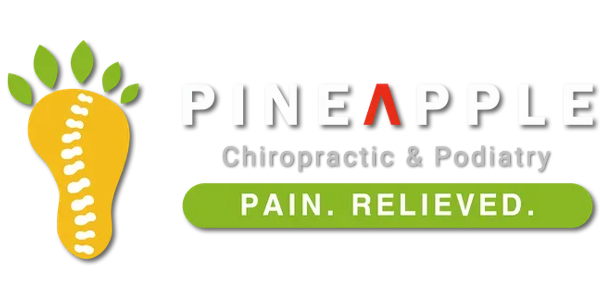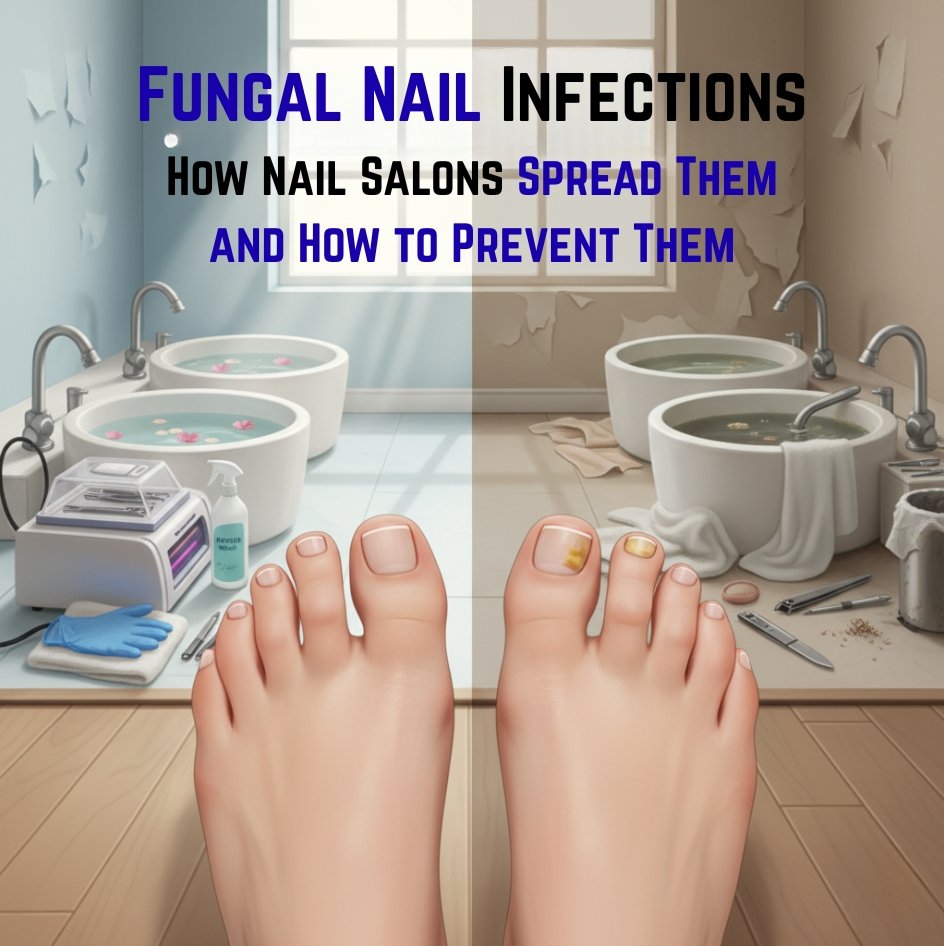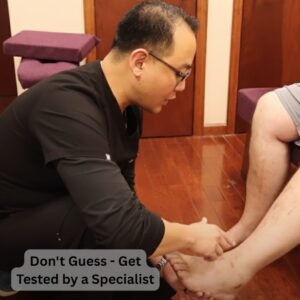Fungal Nail Infections: How Nail Salons Can Spread Them and How to Protect Your Feet
Fungal nail infections might seem like a small issue — until they start spreading, thickening your nails, and making simple tasks like walking uncomfortable.
As Dr. Lee, a podiatrist with over a decade of experience, explains:
That one statement says a lot. If you visit nail salons regularly, understanding how fungal infections spread — and how to prevent them — can save you months of discomfort and expensive treatments
What Is a Fungal Nail Infection?
A fungal nail infection (also called onychomycosis) occurs when fungi — microscopic organisms that thrive in warm, moist environments — invade your toenails. It usually starts as a small white or yellow spot under the tip of your nail and can gradually cause:
- Nail discoloration (yellow, brown, or white)
- Thick, brittle, or crumbly nails
- Unpleasant odor
- Pain or pressure when walking
While it’s rarely dangerous, a fungal nail infection can spread easily and become stubborn if left untreated.
How Nail Salons Can Spread Fungal Infections
Nail salons are meant to be relaxing — but if hygiene isn’t prioritized, they can become a hotspot for fungal infections.
Dr. Lee has seen this pattern repeatedly:
Most salons are busy and don’t properly wipe down their equipment or foot tubs between clients. So, if someone before you had an infection, it can easily pass to you.
Here’s how it happens:
- Shared tools: Clippers, files, and pumice stones can harbor fungi if not disinfected after each use.
- Foot baths: Warm water in whirlpool tubs is the perfect breeding ground for fungi if not cleaned with hospital-grade disinfectants.
- Floors and towels: Barefoot walking or reused towels can spread microscopic fungal spores.
Even if the salon looks clean, invisible contamination can linger.
Nail Salon Hygiene Checklist: What to Look For
Next time you book a pedicure or manicure, use this checklist before you sit down:
- Clean tools: Ask if instruments are sterilized between clients — ideally in an autoclave (a device used by medical professionals).
- Disposable items: Files, buffers, and toe separators should never be reused.
- Fresh water: Footbaths should be drained and disinfected after every client.
- Gloves and handwashing: Technicians should wear gloves or wash their hands before starting.
- Salon license display: A reputable salon always displays certifications and follows local health regulations.
If something doesn’t feel right — walk away. Your health is worth more than a quick polish.
How to Protect Your Feet and Nails
You don’t have to skip the salon entirely — just be smart about it.
Here are Dr. Lee’s top foot care tips to prevent fungal infections:
- Bring your own nail tools (clippers, file, buffer).
- Avoid shaving your legs right before a pedicure — it can create micro-cuts.
- Dry your feet thoroughly after washing.
- Change socks daily (choose moisture-wicking fabrics).
- Use an antifungal spray or powder if your feet sweat easily.
- Visit a podiatrist at the first sign of nail thickening, discoloration, or itching.
Dr. Lee’s Message: Prevention Is Always Better Than Treatment
Fungal infections spread fast and take time to treat. The best thing you can do is avoid getting them in the first place by choosing clean, hygienic salons and being proactive about your foot care.
By keeping your feet clean, dry, and protected, you’re not just preserving nail health — you’re preventing recurring infections that could take months to heal.
Key Takeaway
Clean salons, safe tools, and consistent foot hygiene are your strongest defense against fungal nail infections. Don’t let a simple pedicure turn into a podiatry visit — choose wisely, care daily, and stay fungus-free.
“You can also watch this video to gain a clearer and more detailed understanding of the topic.”





